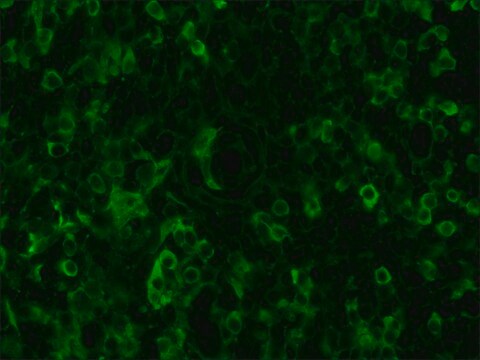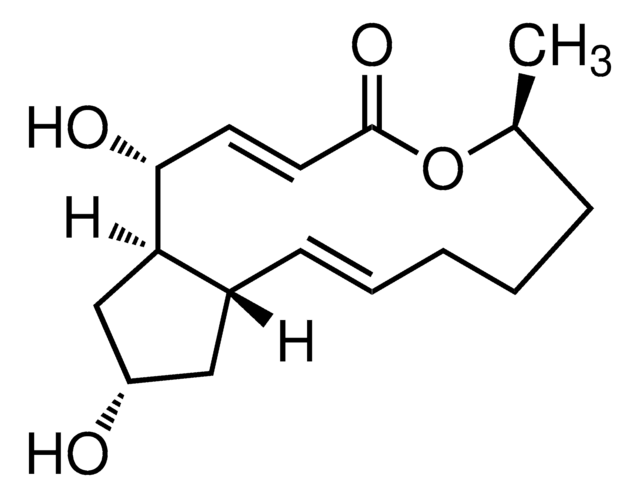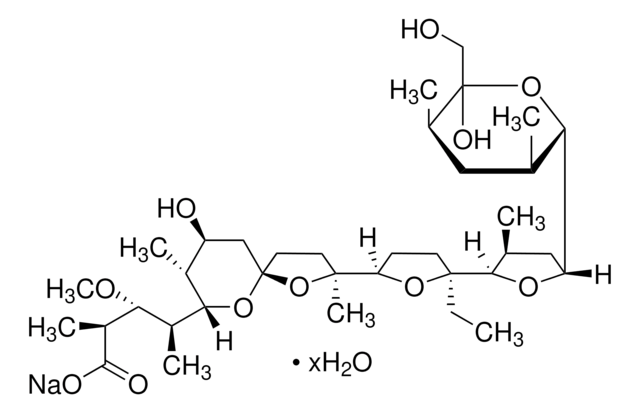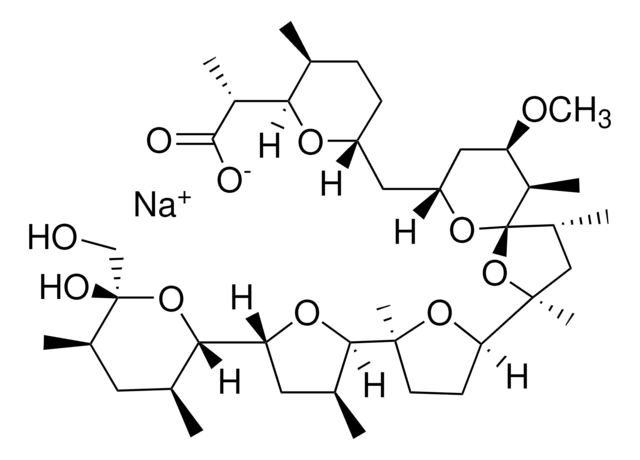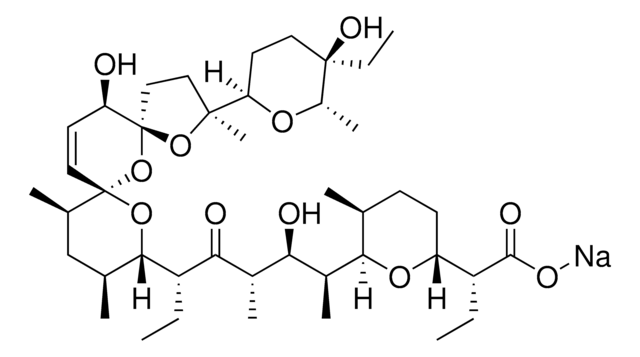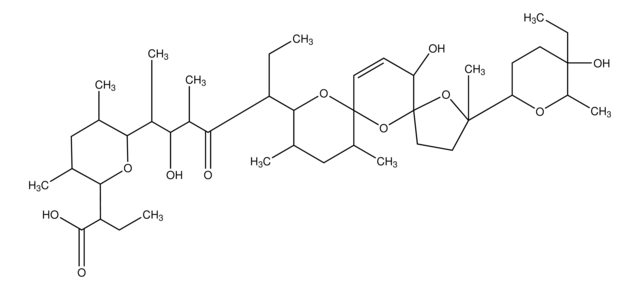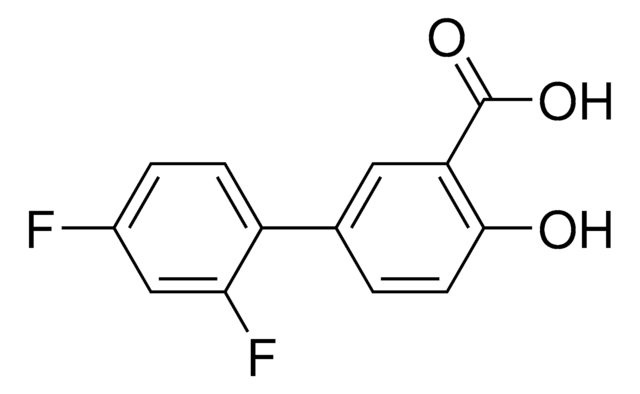M5273
Monensin Natriumsalz
90-95% (TLC)
Synonym(e):
Monensin A Natriumsalz
About This Item
Empfohlene Produkte
Qualitätsniveau
Assay
90-95% (TLC)
Wirkungsspektrum von Antibiotika
Gram-negative bacteria
Gram-positive bacteria
fungi
parasites
viruses
Wirkungsweise
cell membrane | interferes
Lagertemp.
2-8°C
SMILES String
[H][C@]1([C@@]2(CC)O[C@]([C@@]3(C)OC4(C[C@H](O)[C@@H](C)[C@@]([H])([C@@H](C)[C@@H](OC)[C@@H](C([O-])=O)C)O4)CC3)([H])CC2)[C@@H](C)C[C@]([H])([C@@]5([H])O[C@@](O)(CO)[C@H](C)C[C@@H]5C)O1.[Na+]
InChI
1S/C36H62O11.Na/c1-10-34(31-20(3)16-26(43-31)28-19(2)15-21(4)36(41,18-37)46-28)12-11-27(44-34)33(8)13-14-35(47-33)17-25(38)22(5)30(45-35)23(6)29(42-9)24(7)32(39)40;/h19-31,37-38,41H,10-18H2,1-9H3,(H,39,40);/q;+1/p-1/t19-,20-,21+,22+,23-,24-,25-,26+,27+,28-,29+,30-,31+,33-,34-,35?,36-;/m0./s1
InChIKey
XOIQMTLWECTKJL-BEMBKCOJSA-M
Suchen Sie nach ähnlichen Produkten? Aufrufen Leitfaden zum Produktvergleich
Allgemeine Beschreibung
Anwendung
- for the intracellular staining of cytokines
- to study its effects on the regulation of nuclear factor-κ B (NF-κB ) activation
- as a positive control to study its effects on in vitro rumen fermentation
Biochem./physiol. Wirkung
Angaben zur Herstellung
Signalwort
Danger
H-Sätze
Gefahreneinstufungen
Acute Tox. 2 Oral - Aquatic Chronic 2 - Eye Irrit. 2 - STOT RE 2
Zielorgane
Heart,muscle
Lagerklassenschlüssel
6.1A - Combustible acute toxic Cat. 1 and 2 / very toxic hazardous materials
WGK
WGK 3
Flammpunkt (°F)
Not applicable
Flammpunkt (°C)
Not applicable
Persönliche Schutzausrüstung
Eyeshields, Faceshields, Gloves, type P2 (EN 143) respirator cartridges
Analysenzertifikate (COA)
Suchen Sie nach Analysenzertifikate (COA), indem Sie die Lot-/Chargennummer des Produkts eingeben. Lot- und Chargennummern sind auf dem Produktetikett hinter den Wörtern ‘Lot’ oder ‘Batch’ (Lot oder Charge) zu finden.
Besitzen Sie dieses Produkt bereits?
In der Dokumentenbibliothek finden Sie die Dokumentation zu den Produkten, die Sie kürzlich erworben haben.
Kunden haben sich ebenfalls angesehen
Unser Team von Wissenschaftlern verfügt über Erfahrung in allen Forschungsbereichen einschließlich Life Science, Materialwissenschaften, chemischer Synthese, Chromatographie, Analytik und vielen mehr..
Setzen Sie sich mit dem technischen Dienst in Verbindung.